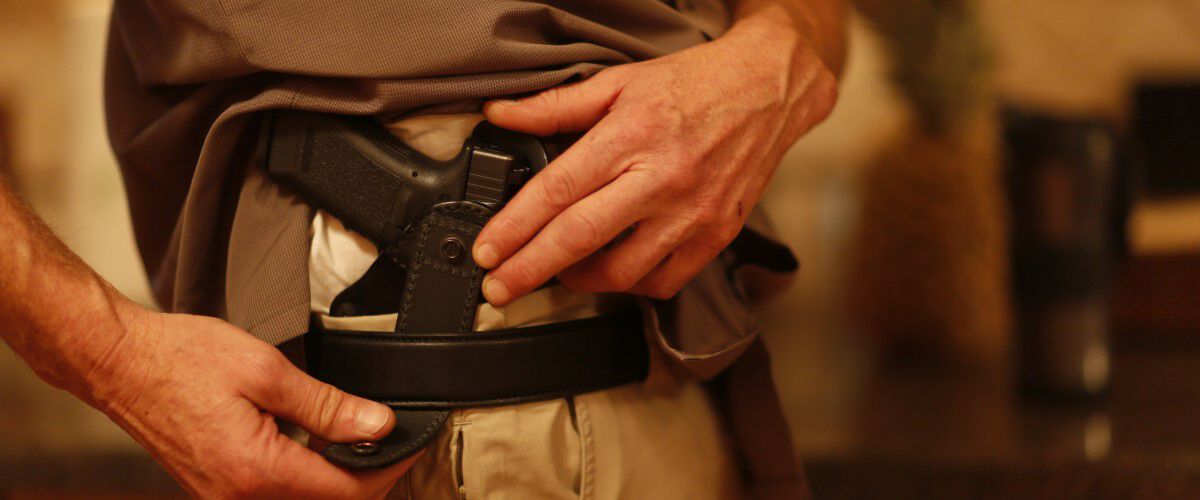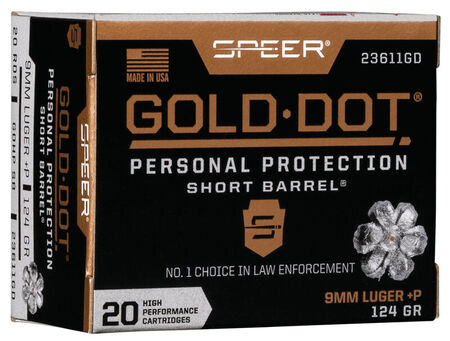Carry Positions
By Jace Bauserman

You’re a responsible citizen. You’ve obtained your permit-to-carry. You’ve immersed yourself in training, but you’re struggling to decide on a carry position that’s right for you. Don’t fret. This is, according to Minnesota police officer and former U.S. Marine George Walker, a common problem. Here’s what to consider.
Comfort Zone
Comfort is key. If you’re carrying concealed, you don’t want people to know you’re carrying. This is, of course, the purpose behind the idea.
Walker points out you can quickly spot someone who is carrying concealed if they are using a carry position that isn’t comfortable for them. These folks walk a little differently, favor a side of the body when they go to sit or stand, and often their discomfort will cause them to move in such a way that reveals the firearm. You need to find a carry position that provides maximum all-day comfort. You need to be able to move, sit and perform daily functions without discomfort.
Different Body Types
Walker is a big man. He stands 6-foot-4 and has a thick build. For this reason, he prefers to carry at a 9 o’clock position, which places the firearm right on the seam of his pant leg. He’s left-handed. For a right-hander, this would be a 3 o’clock position. This keeps the firearm accessible for draw and re-holster and keeps it out of the gut and crotch areas. Another benefit is it places the firearm where your arms naturally hang. Muscle memory is quickly built when operating from this carry position, and it puts the firearm in a location where a quick draw can be mastered.
Those who are a little shorter, lankier or female might want to consider an appendix carry. This places the firearm in front of the hip and right in the middle inseam of your abdominal area. Walker notes that this carry position can be very comfortable for some and is a great carry locale for those looking to gain a little speed. Plus, re-holstering is easy.
“Both of your hands are working in a small area,” he says. “So, your cover garment can quickly be brushed away and the draw can be very fast. You’re drawing flat with your chest versus the long axis of your body.”
Of course, there are lots of other carry positions, and it’s important to find one that is comfortable and functional. Walker speaks about multiple other positions that may be comfortable but aren’t super functional, especially if you find yourself in a gun fight.
Small of the Back
This position is easy to conceal but isn’t the best for speed and re-holstering. Re-holstering will require extra movement and might cause you to have to look over your shoulder. Not good. Should you decide to re-holster, eyes need to stay on the target.
Getting into the grip can also be difficult from this position. Not to mention the fact that if someone is trying to disarm you, you’ll be fighting with one hand behind your back.
“You’ll be fighting with one arm and not two,” Walker says. “You will have a hand behind your back, and you’ll lose a ton of leverage. If carried on the pant seam or appendix, you have more leverage because both arms are in front of you. You can blade your body and use your elbow for space.”
Pocket Carry
A common carry position, the pocket carry requires a small weapon like a snub-nose 38 Special. Walker has trained and seen lots of people that carry in their pocket but said many go with too big of a firearm. If the firearm is big, it creates a noticeable bulge. Pocket carry is fine, but the firearm needs to be smaller.
Ankle Carry
Walker tried an ankle holster for a few years while on duty. He didn’t like it. Why? Weight. Even though the gun was small—a Beretta Tomcat—he found the extra weight cumbersome. With just a little over a pound added to his left leg, walking felt awkward. Plus, the firearm was difficult to reach.
“They aren’t bad when sitting in church or a movie theater,” he says. “But for those looking for a solid daily carry location, it just isn’t the best.”
Your Choice
Ultimately, though, the decision ultimately boils down to personal choice. No two bodies are built the same, nor do any two shooters live, work and move in exactly the same way. That’s why it’s critical to try the many positions, experiment with what works and use the results to choose the one that works best for how you carry.

Gold Dot Short Barrel Personal Protection
At one time, packing a compact handgun meant sacrificing performance. Speer Gold Dot Short Barrel ammunition has changed that. It is designed to work in barrels as short as 1.9 inches while producing less felt recoil and reliable expansion and penetration.
Buy Now